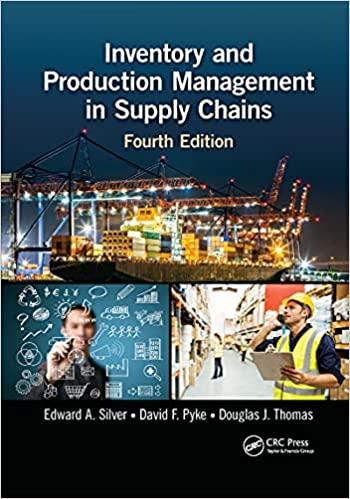A company, attempting to remove slow movers from its line of stocked items, proposes the following types
Question:
A company, attempting to remove slow movers from its line of stocked items, proposes the following types of rules for deciding on whether or not to stock an item. If an item is currently being stocked and no demands have been observed in the last T years, then the item should not be stocked any longer. On the other hand, if the item is not currently being stocked, we should begin stocking it if a total demand of at least m units is observed in a 1-year period. The quantities T and m are control variables. There is a fixed cost c1 associated with activating the stocking of an item (preparation of a new form, etc.). Suppose that it is reasonable to assume that demand for an item is Poisson distributed with rate D
(where D is not really known with certainty).
a. For a given value of D, what is the probability that a currently stocked item will be removed from the files precisely T years after a particular demand transaction? Develop a graph of T values, as a function of D, that ensure a probability of 0.90.
b. Consider an item that has been removed from routine stocking at a time t. For a given value of D, express the probability of activating the item in the very next year (following t) as a function of m.
c. Without developing explicit decision rules, how do you believe that each of T and m will change as c1 increases?
d. In reality, D is changing with time. How might one attempt to recognize this in selecting values of T and m?
Step by Step Answer:

Inventory And Production Management In Supply Chains
ISBN: 9781032179322
4th Edition
Authors: Edward A Silver, David F Pyke, Douglas J Thomas




